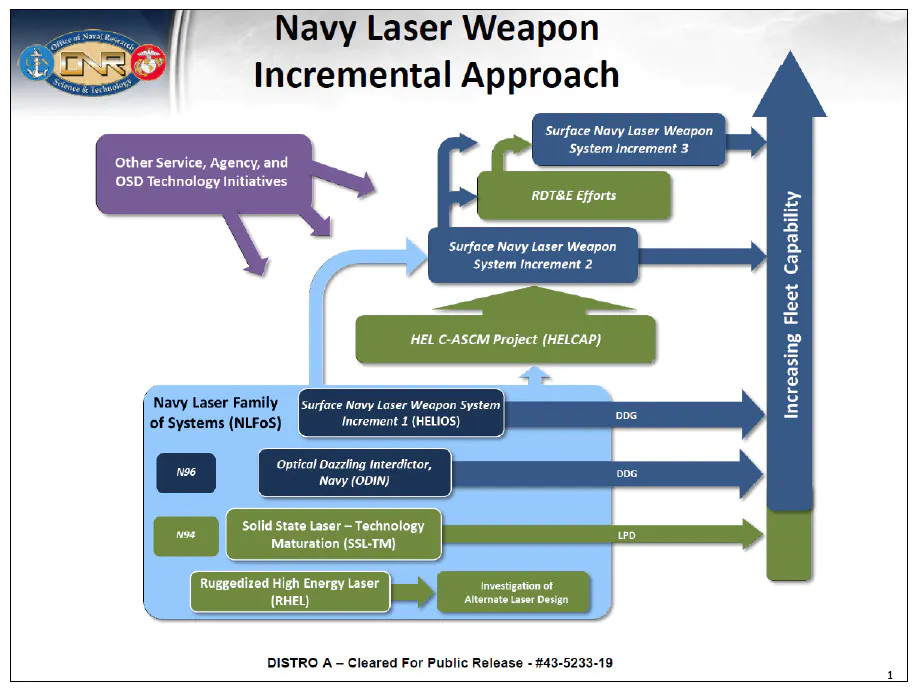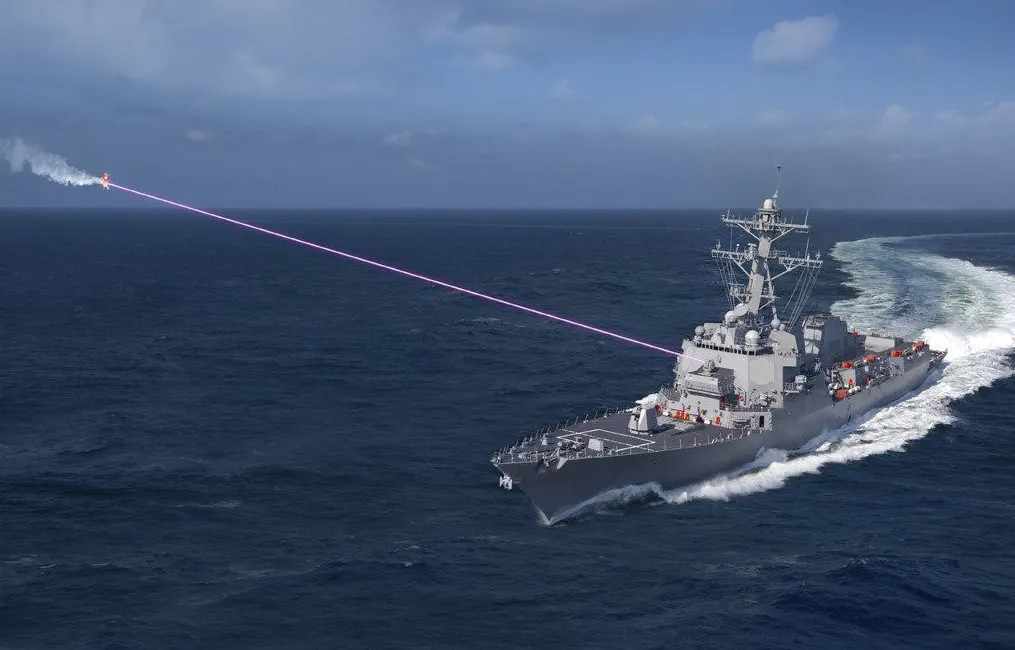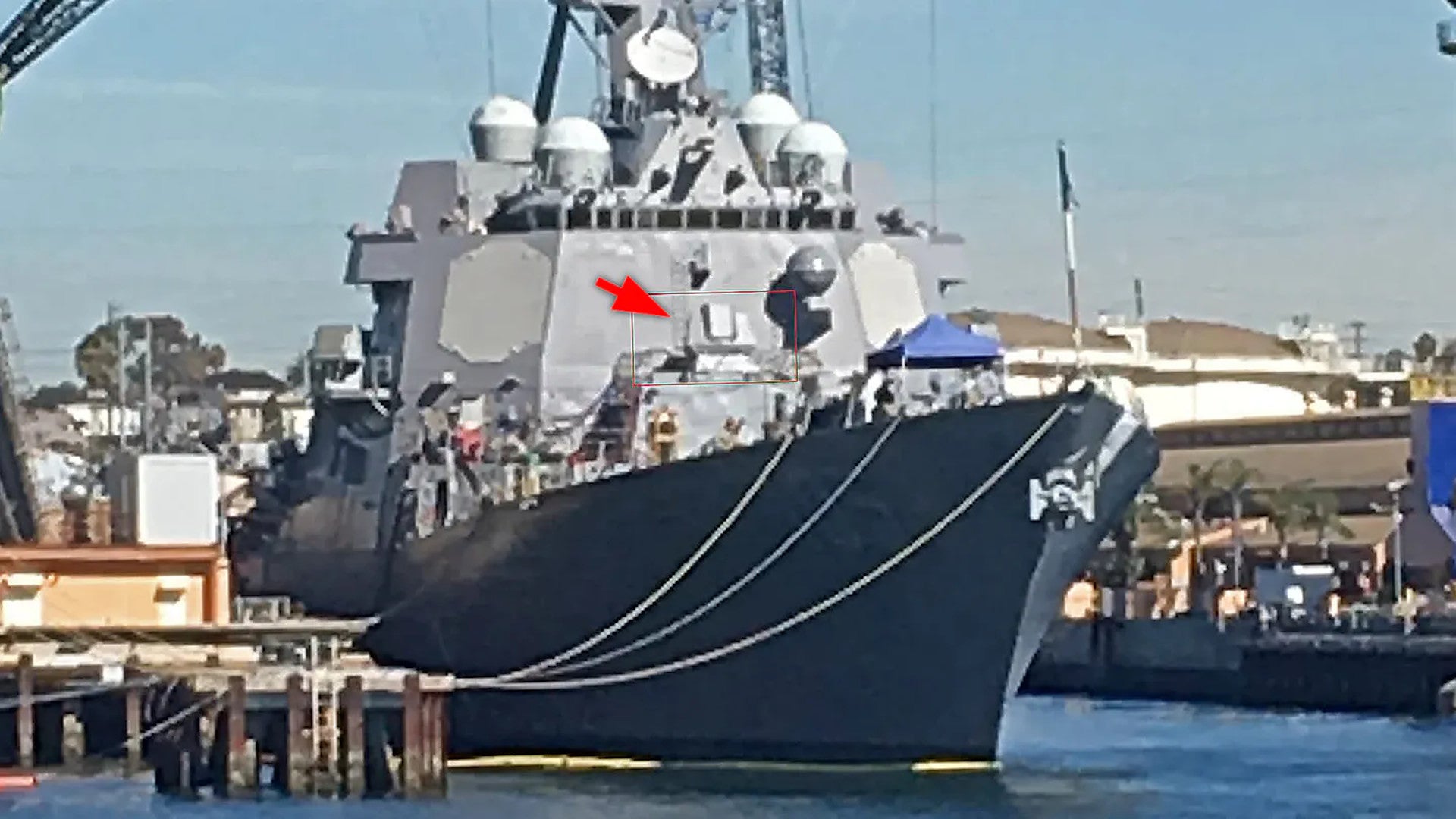The U.S. Navy expects to have eight warships, in total, equipped with the Optical Dazzling Interdictor, Navy, or ODIN, a laser directed energy weapon system, within the next three years. One Arleigh Burke class destroyer, the USS Dewey, is already equipped with ODIN, which The War Zone
was first to report on last year.
Frank Peterkin, the Senior Technologist for Directed Energy at the Office of Naval Research (ONR), disclosed this general schedule for deploying the next seven ODINs across the Navy’s fleets during an online discussion on July 7, 2020. Booz Allen Hamilton hosted the panel discussion as part of a slate of virtual programming in lieu of its annual Directed Energy Summit, which was canceled due to the COVID-19 pandemic.
“We’ve been working hard for the last five to seven years to try to bring directed energy forward in a meaningful sense to the warfighter and the operational community while at the same time advancing the technology,” Peterkin explained. “The warfighters in those communities have to actually be touching these weapons, using them, seeing them work.”
ODIN is one of a number of laser directed energy weapons the Navy has in development now as part of its larger Navy Laser Family of Systems (NLFoS) effort. While the service expects to field many of these systems, it also expects them to serve as stepping stones to more powerful laser weapons down the line.

While its exact power class is unclear, ODIN features a relatively low-powered laser and is designed to work as a dazzler to blind electro-optical and infrared optics. This could be used to confuse optical or imaging infrared seekers on incoming weapons, such as anti-ship cruise missiles, throwing them off course. It could also neutralize cameras used for intelligence, surveillance, and reconnaissance (ISR) purposes on other ships, manned aircraft, and drones.
The Navy has actually publicly said that an urgent request from U.S. Pacific Command for a way to shield its ships against the prying eyes of potential adversaries was the main driving force behind the installation of the first ODIN on the Dewey. Pictures first emerged in September 2019 of that destroyer fitted with the dazzler and the service publicly confirmed that the ship was equipped with the system in February 2020.
“The Pacific Fleet Commander identified this urgent Counter-Intelligence, Surveillance, and Reconnaissance need and the Chief of Naval Operations directed us to fill it as quickly as possible,” Navy Commander David Wolfe, head of the directed energy office within the Program Executive Office for Integrated Warfare Systems. “The NSWC [Naval Surface Warfare Center] Dahlgren Division team did an amazing job addressing challenges and keeping our accelerated schedule on track and moving forward to deliver this capability.”
It’s worth noting that, also in February, a post appeared on the Navy’s official Instagram account warning the Chinese military that “you don’t want to play laser tag with us.” This followed the service’s announcement that a People’s Liberation Army Navy destroyer had aimed a laser beam at one of its P-8A Poseidon maritime patrol planes in the Philippine Sea that same month. This is just one of a string of reported instances of People’s Liberation Army forces shining lasers in potentially dangerous ways at U.S. military aircraft, as well as those belonging to American allies, in the Pacific region and elsewhere.
Iran also routinely uses unmanned aircraft to surveil Navy ships, including amphibious assault ships and aircraft carriers, in the Persian Gulf, Gulf of Oman, and the Strait of Hormuz, which links those two bodies of water. ODIN could be useful addition to the service’s ship operating in those areas, among others, as well.
As already noted, ODIN is just one of the new laser directed energy weapons the Navy has in the works now. In May, the service announced that the San Antonio class landing platform dock USS Portland
had successfully employed its own new Mk 2 Mod 0 Laser Weapon System Demonstrator (LWSD), a much more powerful 150-kilowatt class design, to actually shoot down a small drone during a test. Northrop Grumman developed the Mk 2 Mod 0 as part of the Solid-State Laser Technology Maturation (SSL-TM) program.

There is also the High Energy Laser with Integrated Optical-dazzler and Surveillance (HELIOS) project, which is working on a 60-kilowatt class laser weapon that will also be capable of knocking down smaller unmanned aerial vehicles, as well as functioning as a dazzler, just like ODIN. Lockheed Martin is developing the HELIOS system.

The Navy has not said exactly what additional ships it wants to arm with any of these systems, but it has expressed an interest in integrating them on more Arleigh Burke class destroyers, as well as Littoral Combat Ships, in the past. There is a clear desire to add these kinds of directed energy capabilities to a wide variety of other ships, too. “There have been discussions [about] even putting lasers on aircraft carriers,” ONR’s Peterkin said during the recent remote panel discussion.
Beyond that, the Navy’s plan to field more ODIN systems and other laser weapons only underscores the progress that the services had continued to make in the directed energy realm, while other services have hit setbacks in their own efforts. “We’re in a little bit of a golden age for collaboration now for directed energy,” Peterkin said.
As it stands now, Navy ships leaving for deployments armed with laser weapon systems looks to set to become an increasingly normal affair.
Contact the author: Joe@thedrive.com
